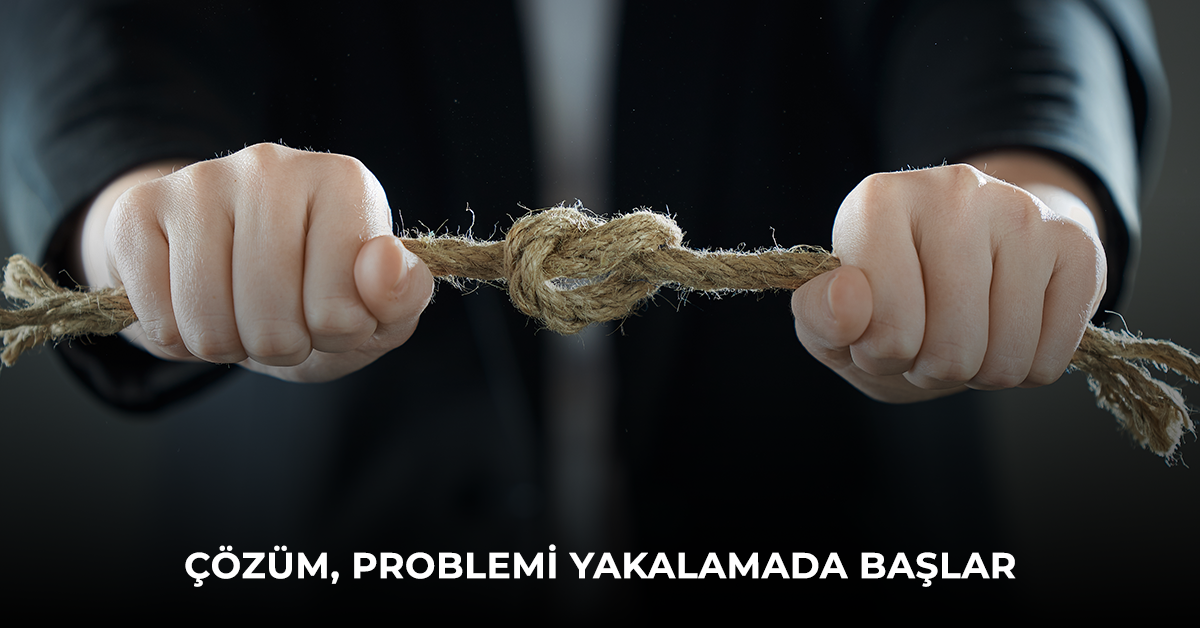Hoshin is a strategic planning process that examines the current situation and includes improvement and learning activities. Hoshin means direction or policy and Kanri means governance. In other words, Hoshin Kanri is a management tool that helps the organization focus on the right direction.
What Are the Benefits of Hoshin Planning?
1. Hoshin planning aligns everyone to a few high-impact goals while at the same time holding them accountable for their commitment through visual management and review.
2. The organization learns and improves the planning process through root causes and corrective actions.
3. Hoshin standardizes the planning, user reporting and presentation format, while at the same time reducing the number of reports generated and creating a Gemba-focused management style.
Hoshin Kanri’s Six Essential Steps
1. Determining the vision, mission and basic criteria of the organization.
2. To set groundbreaking goals, which are several key changes that are vital for the organization to achieve its vision.
3. We will create annual improvement plans. And when referencing annual plans, there is the flexibility to create shorter planning horizons such as quarterly goals.
4. Agreeing on how to achieve the goals through two-way communication between the annual goals, management and direct reports. (Catchball)
5. Weekly, monthly and annual review of the progress of the organization’s goals.
6. Trainings and learning activities that will ensure continuous understanding and development of our daily work.
How do we define the Organization’s Mission?
An organization’s mission summarizes why they exist. Or in other words, the mission allows them to better focus their resources and efforts by clearly defining what the organization is doing to add value to its customers.
Mission statements are usually short in nature, typically a few sentences. And since the target audience for the mission statement is managers, company employees, shareholders and customers, everyone that matters understands what the company is doing and what it isn’t doing.
Mission statements are normally created by a group of senior leaders, but it can also be very useful to involve frontline employees in the creation process. When the leadership team feels that it has defined the company’s mission, it is preferred to share the mission with other employees and customers for feedback and comments.
Values and Metrics
Once the organization’s mission has been defined, we must first evaluate the organization’s values and metrics to make the organization’s vision right.
The first thing I suggest you take a look at is the organizational values that strongly influence the way employees work daily. For example, in your organization, these can be people, products, and profits. If we explain this a little bit, your products need human intelligence and power to develop and hold in the market. Your institution is an organization formed to make a profit. A for-profit organization will always focus on financial metrics such as operating income and earnings before interest, taxes, depreciation and amortization. Innovation will also be a benchmark for the continuity of profitability.
Then, the current status of the institution according to these values and metrics is evaluated. Based on the current situation, the targets for the next year are set and a monthly follow-up schedule is made.
There are strong analysis methods to be used in understanding the current situation of the institution and making future plans;
STEEP analysis is performed with company stakeholders and important employees, taking into account social, technological, economic, environmental and political changes.
SWOT analysis is carried out with key company employees, taking into account strengths, weaknesses, opportunities and threats.
How Will We Improve the Vision of the Organization?
The vision will also help us define the goals and objectives of the organization, as it clarifies what the future will look like.
1. Because the chances of long-term success are much higher when the vision is shared by many, the vision is best created by a group of senior leaders.
2. The vision is grounded in reality as the team focuses on how to solve existing problems by creating an improved ideal situation.
3. A good grasp of the strengths and opportunities of the organization as we work to manage with the facts.
4. The vision should inspire all employees.
What Are The Steps To Create A Perfect Vision?
1. The team, consisting of leaders and front-line employees, is asked questions that will guide the team to find the vision;
a. Our net profit was very high in the last quarter of 2020, how did we achieve this?
b. Customer satisfaction was very good in XX project. What was the reason for this?
c. Why is the stock turnover so high for XYZ product?
2. The answers to these questions lead the team to success words.
3. Each achievement competency is studied with brainstorming in subgroups. The most similar post-it posts are collected and evaluated. The vision is created with the three most important competencies and values.
Groundbreaking Goals
Breakthrough goals are a few vital changes that are required for the organization to achieve its vision. This is important as the Hoshin process is about a radical change made possible through collaboration and teamwork.
The goals are SMART; it should be specific, measurable, achievable, realistic and time bound.
Breakthrough goals should bring us closer to our ideal vision of where we want the organization to be.
The groundbreaking goal is to stand out for a particular organizational challenge or opportunity. For example, a company may have a serious quality control issue that potentially leads to loss of customers. In this case, a breakthrough goal may be focused on specific quality initiatives.
The number of groundbreaking goals should be made taking into account the competencies of the team. It can be one or three.
While determining groundbreaking targets, a wide improvement is achieved in the institution with a target by using the radar diagram and selecting the one with the highest interaction between units.
Annual Goals
The main goals are the main input of the goal’s reality / plan. Groundbreaking Basic Targets A3. It is evaluated by problem analysis method. After analyzing the roots of the problem, the main aim is to determine the most effective healing activities with the least resources. Each activity is planned for a year, in monthly periods, with a PDCA cycle. Some activities end in three months, while others may take up to three years to complete.
As a matter of fact, when we look at the chart, your groundbreaking contented goal and the activities that support it should also appear.
For example, our goal is to increase it by 40%. Downloading the current instead of TAKT may be its equivalent. For this, production, logistics, purchasing, product development and quality experiment will carry out activities related to their own processes according to the actions in A3 analysis of the plans.
Catch the ball
One of the key concepts that makes Hoshin planning so powerful is Catch ball, which derives from the idea of two good back and forth rolls. Catch ball’s core idea is that managers collaborate with subordinates on what the goal was and how to achieve the goal. And when both CEO and senior executives are satisfied, action planning and relevant (main or sub-level) A3 also takes its place.
Of course, the senior manager then launches his version of Catch ball with the department managers and the process continues throughout the entire organization.
Now when a manager receives A3 document-based goals in a Hoshin plan owned by the CEO, the manager will meet with his aces directly. The target in A3 will then be decomposed and handed over to each stakeholder, creating a common plan of how the target will be met.
Now each of these executives will meet directly with their aces and get the same resources, timeline, etc. It will carry out the determination process. Now these plans will go all the way to the last link of the management chain until A3 is acquired and owned at all levels.
Hoshin Review
1. It is essential to have a single control center room for visual communication and learning. This could be a war room or a wall in an office or factory.
2. It is essential to have a review cycle schedule that allows all levels of the organization to monitor results with appropriate frequency.
3. The frequency of the controls increases as they approach the point of departure. For example, CEO and senior executives will likely review their A3s monthly, while supervisors and team leaders can review their A3s weekly and in some cases daily.
4. It is important to define standards to run effective Hoshin review meetings.
5. A3s are dynamic in nature and should be updated regularly. Before the Hoshin review meeting begins, each A3 owner should review with their team and also hold informal meetings to answer any questions they may have.
6. When the meeting begins, all A3 owners present the progress made by their team and if any of their actions are yellow or red, submit the countermeasure report accordingly.
7. The most important aspect of the Hoshin review meeting is to ensure learning and progress throughout the organization by updating standards.
Awareness and Organizational Learning
One of the most important aspects of the Hoshin Planning Process is learning from both successes and failures.








